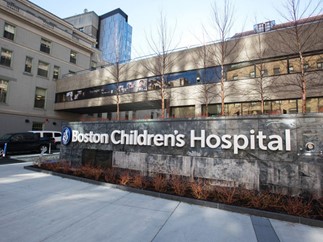Helping Families with No Place To Go
FamilyAid’s innovative approaches to homelessness have supported more than 4,000 children and parents during the pandemic. These families lost their jobs, struggled with illness, were victims of domestic violence, or experienced a combination of these circumstances, causing them to fall into homelessness. But what happens to families who are now being turned away from emergency assistance as the pandemic rages on?
Through a special one-year federal COVID grant, FamilyAid has expanded its partnership with Boston Medical Center and Boston Children’s Hospital to provide low-barrier crisis shelter and services to families who – having no place to go and who are initially ineligible for state shelter programs – are turning up in their emergency rooms. The number of homeless families seeking medical treatment and/or shelter in hospitals is increasing dramatically. And as cold weather rolls in, homeless families have limited options on where they can remain safe.
Can you imagine leaving the hospital on a cold November night with a newborn and nowhere to go? That’s what happened ten days ago to two new mothers:
Shelly, a new mother of twins, was discharged from Boston Medical Center with one infant, while the other remained in the NICU. Facing concerns about domestic violence at home, Shelly had nowhere to go and was ashamed to tell the discharge nurse of her predicament. Shelly and her one newborn remained in the waiting area, visiting the hospitalized infant when they could. A hospital worker noticed Shelly’s constant presence, and contacted FamilyAid to provide a safe place for Shelly and her child,
FamilyAid placed Shelly in one of six new units of crisis shelter and is helping her to find a home while working together with Boston Children’s Hospital staff to insure she and both of her children are getting the supports they need as they grapple with their domestic violence situation, medical crisis and housing instability.
On the same night that Shelly was discharged, another new mother, Manita, who was renting a room from a friend, was told she could no longer live there just as she was preparing to leave the hospital.
Once again, FamilyAid was called by the hospital, and we immediately transported Manita and her new daughter to the new crisis shelter. We are now working to find Manita, and her daughter place they can call home,
“When other doors are closed, ours is open. With more than a dozen families boarding at ERs across the city every week, we need to do more. These six units are critical, and we must keep them up and running beyond the end of our federal grant,” says FamilyAid Chief Operating Officer Annie Marcklinger Gordon.
Families who enter this crisis program are provided a temporary safe place to live, wraparound case services, connections to critical services, transportation, clothing, food, diapers, and other essentials as they await their transition to a either a longer-term shelter or stable housing.
This transitional program is a solution to the increasing numbers of families seeking shelter in emergency rooms. Started with emergency public funding, the six transitional units FamilyAid operates will have to be sustained with private funding beginning next spring. In the coming months, we will be working hard to secure the necessary funding to continue this high-impact program.
FamilyAid’s mission of ending child and parent homelessness cannot be achieved alone. Our partnerships are essential to our work by providing families with adequate support, allowing them to remain stably housed and thrive.



